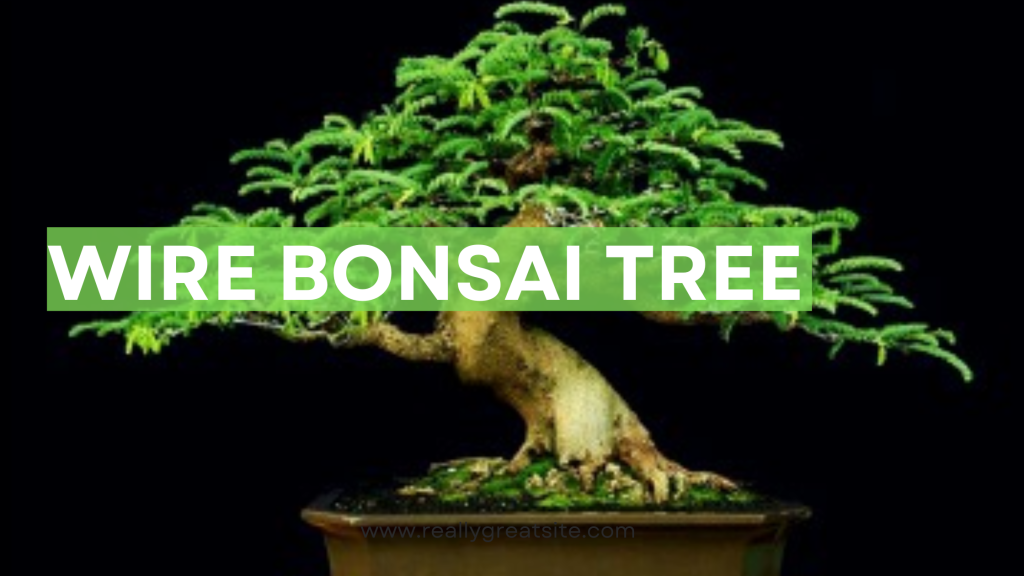Creating Your Own Wire Bonsai Tree: A Step-by-Step Guide
If you’re looking for a new way to add some natural beauty to your home decor, why not try creating your own wire bonsai tree? These miniature trees are a popular art form in Japan and have become increasingly popular around the world. With just a few materials and some patience, you can create your own stunning wire bonsai tree that will be the envy of your friends and family. In this step-by-step guide, we’ll show you everything you need to know to create your own wire bonsai tree. From selecting the right wire to forming the branches and leaves, we’ll walk you through the entire process. So grab your wire cutters and let’s get started on a fun and rewarding project that will bring natural beauty into your home!
Materials needed for creating a wire bonsai tree
Before we start, let’s gather all the materials you’ll need to create your wire bonsai tree. These are the following:
– Wire cutters
– Pliers
– Wire – copper, aluminum, or brass
– A small potted plant
– A small pot for displaying your wire bonsai tree
– Soil
– Gravel
Now that you have all the materials, let’s proceed to the next step.
Choosing the right plant for your wire bonsai tree
The first step in creating your wire bonsai tree is selecting the right plant. Look for a small plant that has a strong central trunk and branches that are easy to shape. Avoid plants that have thin stems or are too fragile, as they will not be able to withstand the wiring process.
Common plants used for wire bonsai trees are junipers, ficus, and boxwood. Choose a plant that will fit the size of the pot you have selected for your wire bonsai tree.
Before wiring your plant, you need to prepare it by removing any dead or damaged leaves and branches. This will make it easier to see the structure of the plant and determine which branches to wire.
Next, water the plant thoroughly and allow it to drain completely. This will make it easier to handle during the wiring process.
When the plant is dry, you can begin wiring.
Wiring techniques for shaping your bonsai tree
To begin wiring your plant, select a thick, sturdy wire that matches the thickness of the branch you want to shape. Cut a length of wire that is approximately twice the length of the branch, and wrap it tightly around the branch, starting at the base and working your way up.
Next, bend the wire in the direction you want the branch to go. Use pliers to shape the wire into the desired form.
When you have shaped the branch, wrap the wire around the base of the branch to hold it in place. Cut off any excess wire using your wire cutters.
Repeat this process for each branch you want to shape. Be sure to leave some branches un-wired to maintain a natural look.
Once you have wired all the branches, it’s time to add foliage to your wire bonsai tree. Start by selecting small branches that have multiple leaves. Wrap a thin wire around the base of the branch, and then wrap it around the main branch to hold it in place.
Continue adding branches and foliage until your wire bonsai tree is full and lush. Be sure to leave some empty spaces to maintain a natural look.
Tips for maintaining your wire bonsai tree
To keep your wire bonsai tree healthy and beautiful, there are a few tips you should follow.
– Water your plant regularly, but be careful not to overwater it.
– Trim any dead or damaged leaves and branches.
– Keep your wire bonsai tree out of direct sunlight.
– Fertilize your plant regularly to promote growth.
Displaying your wire bonsai tree
Once your wire bonsai tree is complete, it’s time to display it in your home. Place it in a small pot filled with soil and gravel. You can also add decorative rocks or moss to the pot to enhance the natural look of your wire bonsai tree.
Display your wire bonsai tree in a prominent location in your home where it can be appreciated.
Common mistakes to avoid when creating a wire bonsai tree
While creating a wire bonsai tree is a fun and rewarding project, there are a few common mistakes you should avoid.
– Over-wiring your plant – Be sure to leave some branches un-wired to maintain a natural look.
– Using wire that is too thick – Use wire that matches the thickness of the branch you want to shape.
– Wiring too tightly – Be careful not to damage the bark or branches of your plant by wiring too tightly.
Conclusion and final thoughts
Creating your own wire bonsai tree is a fun and rewarding project that will bring natural beauty into your home. With just a few materials and some patience, you can create a stunning miniature tree that will be the envy of your friends and family. Follow the steps outlined in this guide, and you’ll be on your way to creating your own beautiful wire bonsai tree in no time.

